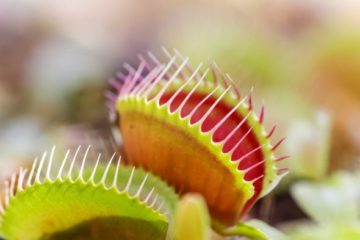Joanna Thompson in Scientific American:
 When a Venus flytrap snaps its fleshy lobes around an unsuspecting insect, it’s game over for the prey. The plant’s unusual habit of snacking on animals has captured the imagination of people ranging from Charles Darwin to playwright Howard Ashman and composer Alan Menken (the latter two created the 1982 musical Little Shop of Horrors, which stars a human-eating plant). Now, in an experiment that might seem straight out of a pulp science-fiction novel, scientists have harnessed the flytrap’s power for themselves: they have developed a method to trigger its trap using soft, semi-organic artificial neurons.
When a Venus flytrap snaps its fleshy lobes around an unsuspecting insect, it’s game over for the prey. The plant’s unusual habit of snacking on animals has captured the imagination of people ranging from Charles Darwin to playwright Howard Ashman and composer Alan Menken (the latter two created the 1982 musical Little Shop of Horrors, which stars a human-eating plant). Now, in an experiment that might seem straight out of a pulp science-fiction novel, scientists have harnessed the flytrap’s power for themselves: they have developed a method to trigger its trap using soft, semi-organic artificial neurons.
“The overarching goal of our research is to try to develop devices that can mimic the functioning of building blocks in our body,” says study co-author Simone Fabiano, an organic nanoelectronics researcher at Linköping University in Sweden. The Venus flytrap provides an efficient testing ground for an interface between living creatures and electronics that, Fabiano and his team hope, may one day lead to fully integrated biosensors for monitoring human health—or a better interface for people to control advanced prostheses with their nerves. The results were published in Nature Communications last week.
More here.
